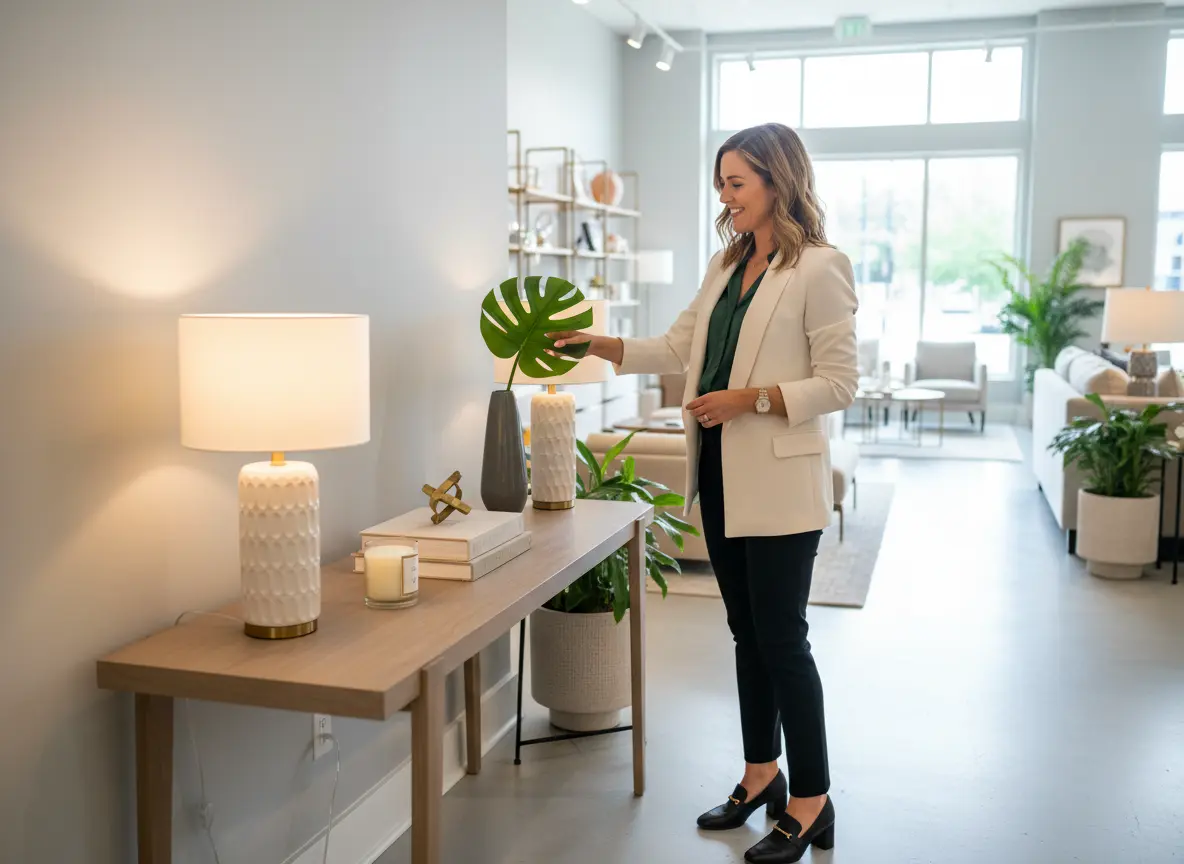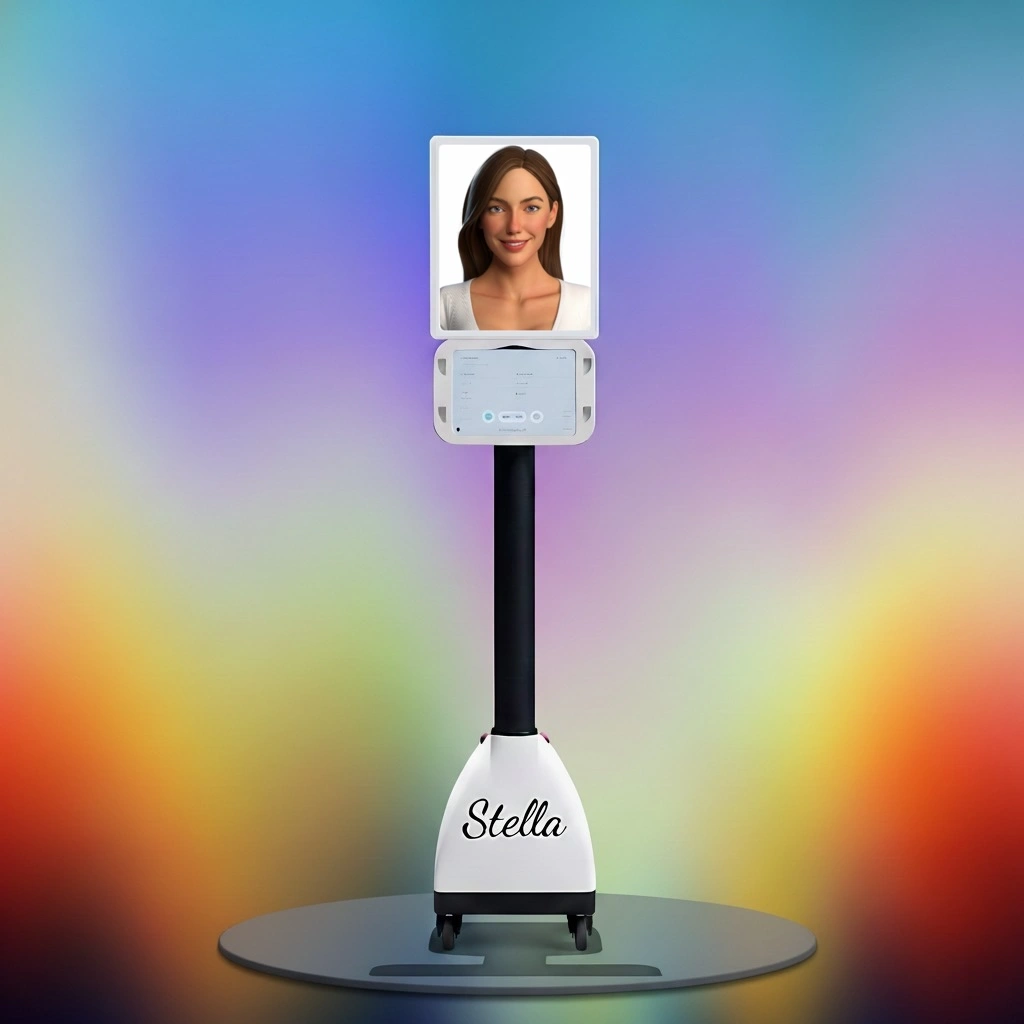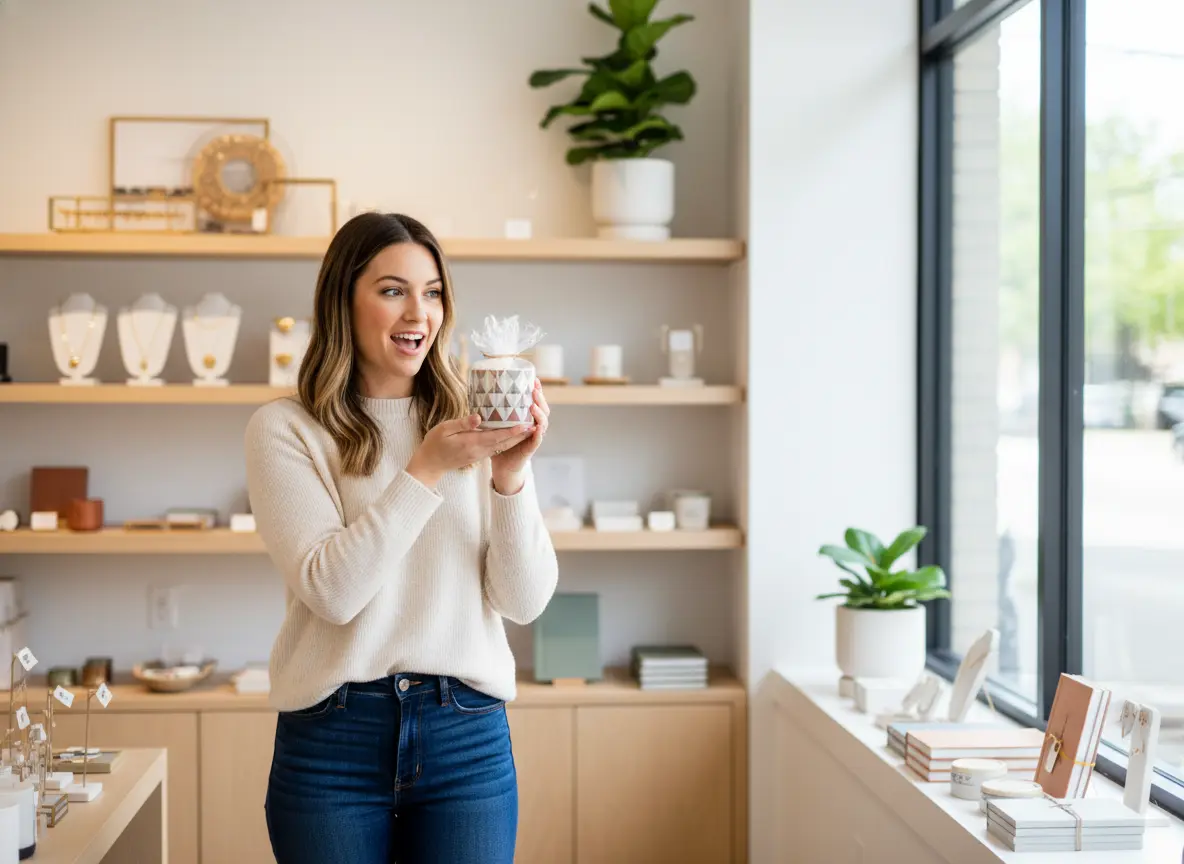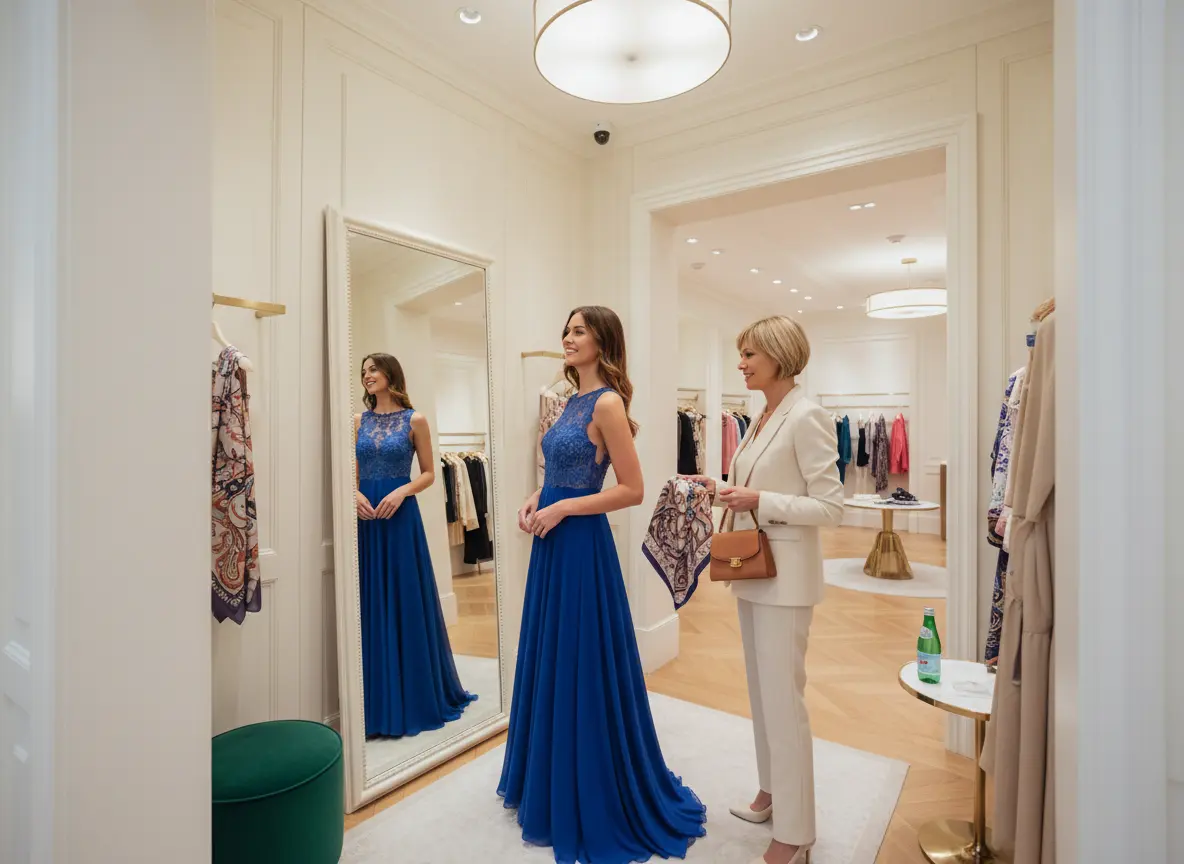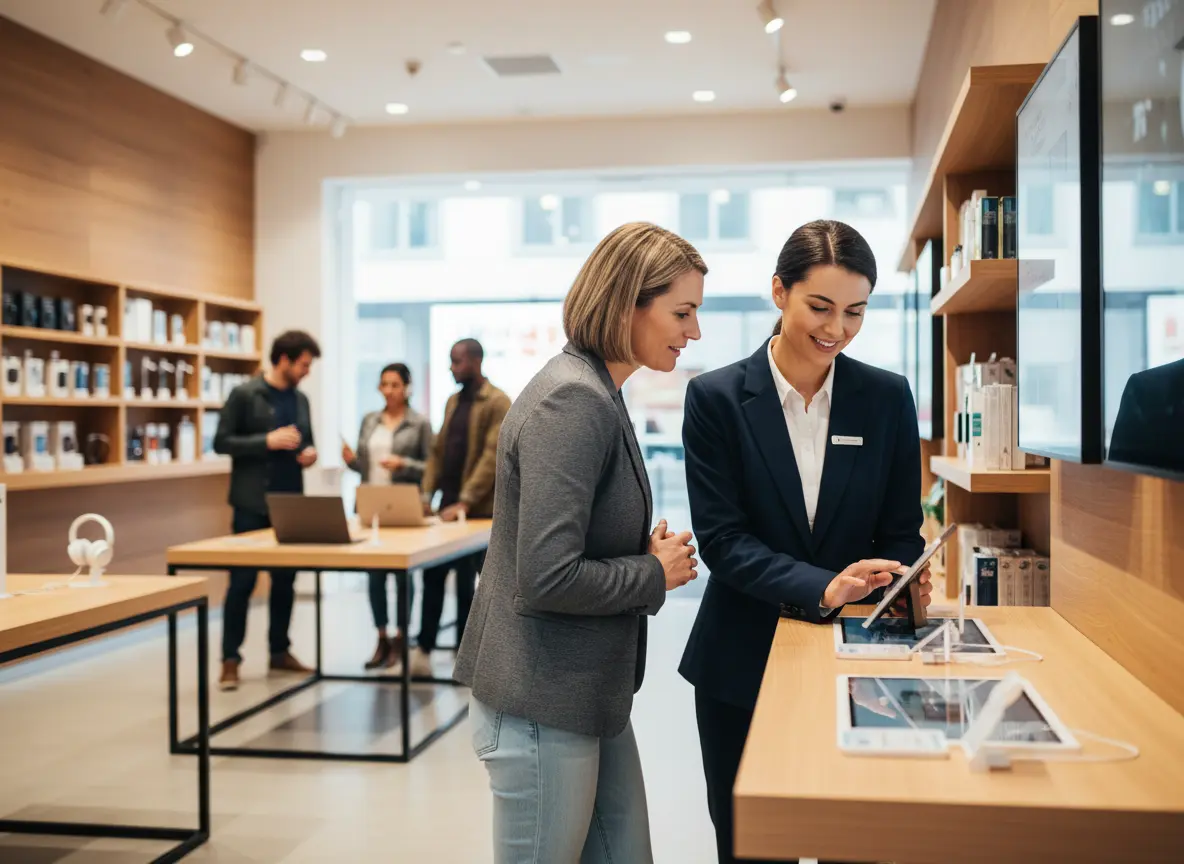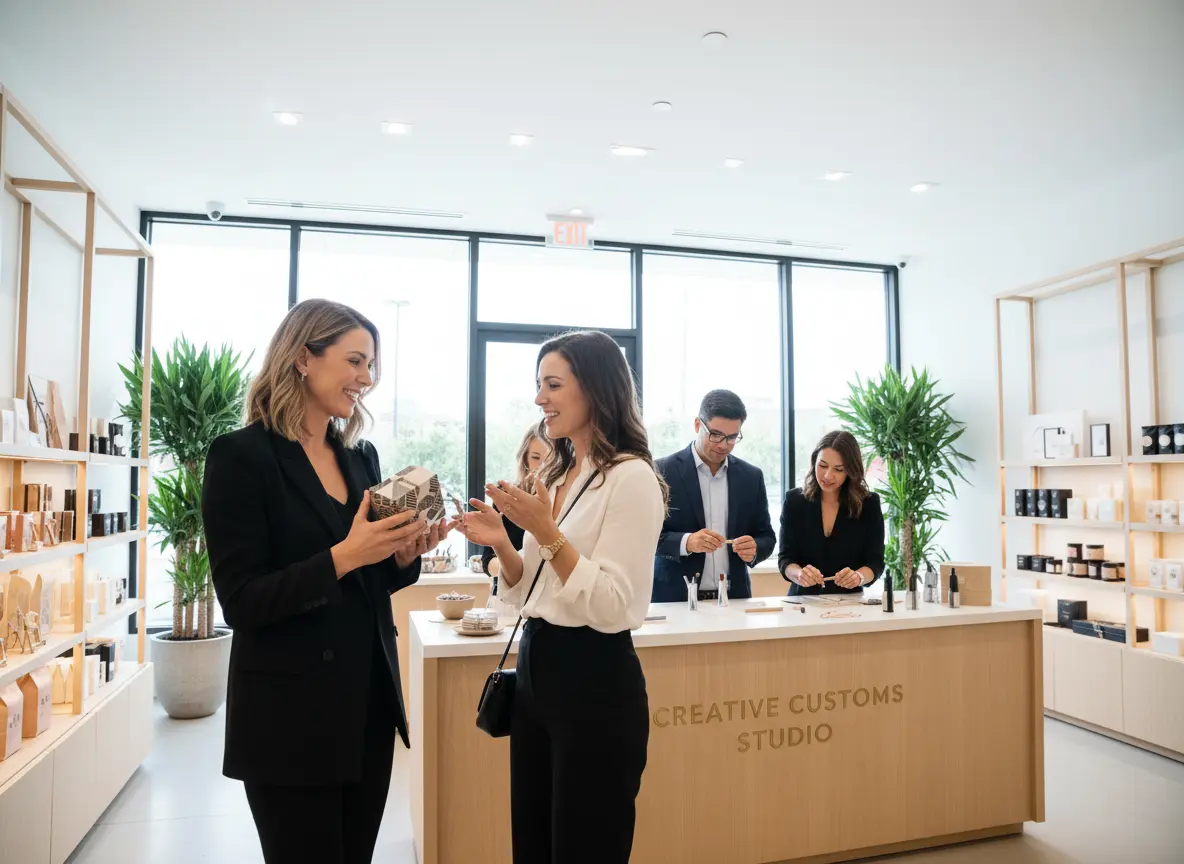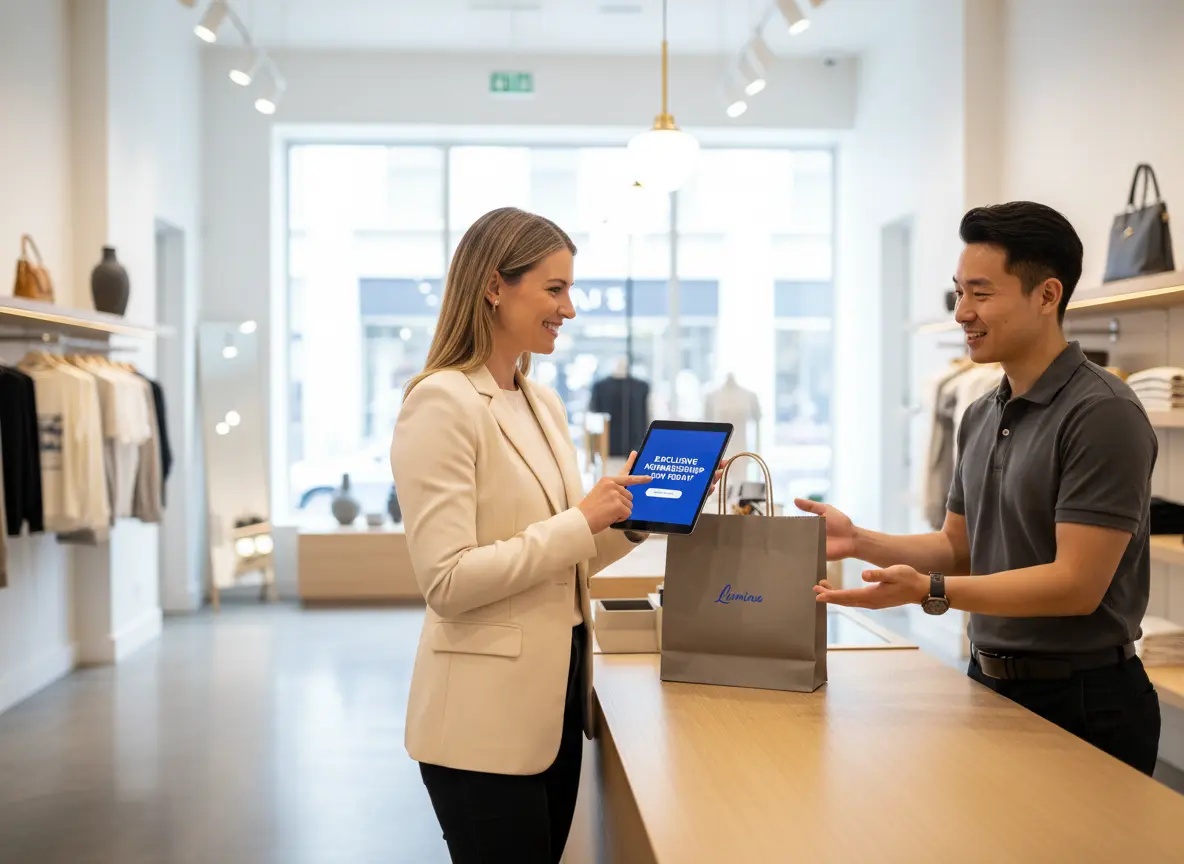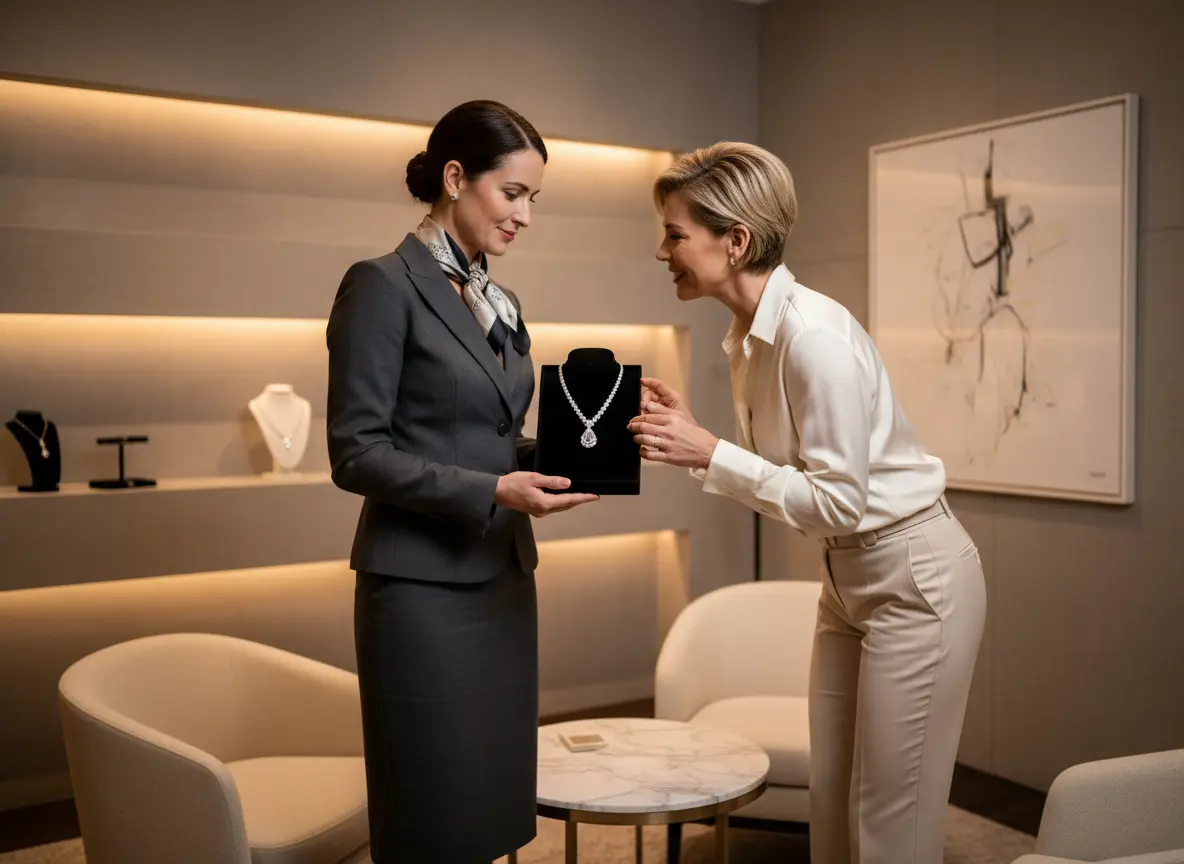Are Your Shelves Putting Customers to Sleep?
Let’s be honest. You’ve got incredible products. That hand-thrown ceramic vase? A masterpiece. That velvet armchair? The stuff of cozy-afternoon-nap dreams. But if your store looks like a warehouse where beautiful things go to wait for a home, you’ve got a problem. Lined up in neat, boring rows, your products don't sing; they just sit there, collecting dust and your silent, desperate pleas to be purchased.
This is the retail equivalent of a bad dating profile. All the great qualities are there, but the presentation is, to put it mildly, uninspired. Customers walk in, get overwhelmed by the sheer volume of "stuff," and walk out with nothing because they couldn't envision how any of it would fit into their lives. The antidote to this retail malaise? The shoppable vignette.
A vignette is a small, curated scene that tells a story. It’s not just a chair; it’s a reading nook. It’s not just a collection of kitchenware; it’s a Sunday brunch waiting to happen. It’s the magic that transforms your store from a mere product catalog into an aspirational lookbook, inviting customers to step into a lifestyle—and then buy a piece of it to take home. Ready to stop selling items and start selling inspiration? Let’s get to it.
The Art and Science of Vignette Creation
Creating a compelling vignette is part art, part science, and a tiny part witchcraft. It’s about more than just plopping a few of your favorite things together. It’s a calculated act of visual storytelling designed to stop a customer in their tracks. Here’s how to master the craft.
Storytelling: Sell a Vibe, Not Just a Vase
Every great vignette starts with a story. Before you pick a single product, ask yourself: What’s the theme? Who is this for? What feeling am I trying to evoke? Giving your display a name, even if it's just for your own reference, can be incredibly helpful. Think themes like:
- "The Modern Minimalist's Home Office"
- "A Moody, Romantic Bedroom Corner"
- "Coastal Grandmother's Seaside Escape"
Instead of just displaying a desk, chair, and lamp, you create a scene. The "Home Office" vignette might feature a sleek oak desk, an ergonomic (but still stylish!) chair, a minimalist brass lamp, a leather-bound notebook, and a single, elegant pen. Suddenly, you’re not just selling furniture; you’re selling productivity, sophistication, and the idea of finally getting one's life together. That's a powerful sales pitch.
The Rules of (Visual) Engagement
Your story needs a solid visual structure to land effectively. You don’t need a degree in interior design, but a few basic principles will elevate your displays from "amateur" to "astonishing."
First, play with height and scale. A flat, one-level display is a boring display. Create visual interest by varying the heights of your objects. Use a stack of coffee table books to elevate a small candle. Place a tall, slender floor lamp next to a low, chunky armchair. The contrast is what draws the eye in.
Next, focus on color and texture. Stick to a cohesive color palette for each vignette. This could be monochromatic (different shades of green) or complementary (deep blues and warm oranges). Then, layer in a variety of textures. Imagine a smooth marble side table topped with a rough-hewn ceramic coaster, a soft velvet cushion, and a shiny metallic picture frame. This tactile variety makes the scene feel rich and real, begging customers to reach out and touch.
From Clutter to Curated: The Power of Editing
This is the hardest part for many store owners who love all their products. But a vignette is not a storage unit. Its power lies in its careful curation. Once you’ve assembled your scene, take a step back and apply the golden rule of accessorizing: remove one item.
Does the scene feel cleaner? More focused? Often, it does. Every single item in your vignette should serve the story. If that extra throw pillow muddies the color palette or that little trinket doesn't fit the "minimalist office" vibe, it has to go. The goal is to create an aspirational, yet achievable look—not a scene from a hoarder's next episode.
Turning Inspiration into Action
A breathtaking vignette is a fantastic start, but it's a silent salesperson. What if you could give it a voice? How do you ensure customers not only see your beautifully crafted scenes but are also guided toward them and understand the value you've created?
Guiding the Customer's Journey
You can spend hours perfecting a "Cozy Fireside" setup in the back of your store, but if customers never make it past the front entryway, your work is for nothing. This is where a little automated charm comes in handy. While your team is busy being the creative geniuses behind the scenes, an in-store assistant like Stella can act as your master of ceremonies.
Positioned near the entrance, Stella can greet every shopper and plant the seed of discovery. Imagine a customer walking in and being greeted with, "Welcome to The Curated Home! We just set up our new 'Urban Jungle' collection in the lifestyle section. It's the perfect inspiration for bringing some green into your space." You've just instantly directed traffic and built anticipation, all without pulling a staff member away from a customer or a project.
Upselling Without the Sleaze
Vignettes are naturally brilliant for upselling. By showing how perfectly a lamp, a side table, a book, and a coaster set work together, you’re planting the idea of a bundled purchase in the customer's mind. They came in for a lamp; they're leaving with a whole "moment."
Again, a robotic assistant can amplify this. Stella can be programmed to highlight promotions tied to your vignettes. For instance, she might mention, "And just so you know, when you buy any armchair this week, you get 20% off any lamp and throw blanket to complete your reading nook!" It’s a helpful, non-aggressive prompt that feels less like a hard sell and more like a friendly tip.
Vignettes That Actually Sell
Let's move beyond the pretty and into the profitable. A successful vignette isn't just an art installation; it's a strategic sales engine. Here’s how to ensure your displays are working as hard as you are.
Location, Location, Decompression Zone
Where you place your vignettes is just as important as what’s in them. The most valuable real estate in your store is the "decompression zone"—the first 5 to 15 feet inside the entrance. According to research, this is where shoppers transition from the outside world and decide if they want to stay and browse. Placing your most powerful, eye-catching vignette here is a non-negotiable.
This "hero" vignette sets the tone for the entire store and showcases your brand's aesthetic. Use smaller "mini" vignettes on shelving units, console tables, and even in unexpected corners throughout the store. These create delightful moments of discovery and keep the customer engaged as they move through the space.
Mix High, Low, and Slow
A smart vignette is a masterclass in product mixing. To maximize its selling potential, your display should include a strategic blend of items:
- The Hero (High): This is your main event, the big-ticket item you want to move, like a sofa, a dining table, or a stunning piece of art. It’s the anchor of your story.
- The Supporting Cast (Low): Surround your hero with lower-priced, high-margin, "grab-and-go" items. Think candles, coasters, small plants, and beautiful books. These are the impulse buys that customers can easily add to their purchase without a second thought.
- The Redemption Arc (Slow): We all have them. Those products that are perfectly lovely but just aren't moving. That funky-colored lamp? That oddly shaped decorative bowl? A vignette is its second chance. By placing a slow-moving item in a beautifully styled context, you show customers how to use it, instantly increasing its appeal.
Keep It Fresher Than Last Week's Bread
The worst thing a vignette can become is stagnant. A display that has been sitting for three months tells repeat customers that nothing new is happening in your store. You must, must, must keep things fresh. Aim to change your main "hero" vignette at least monthly, and smaller displays every one to two weeks.
This constant refresh does two things: First, it gives your loyal customers a reason to keep coming back—there’s always something new to see. Second, it allows you to stay relevant by highlighting seasonal items, new arrivals, or themes tied to holidays or local events. Create a simple content calendar for your displays just like you would for your social media. Plan your themes in advance, and your store will always feel dynamic and exciting.
A Quick Reminder About Stella
While you focus on the art of visual merchandising, don't forget about the art of the welcome. Stella is the friendly, reliable AI retail assistant who ensures no customer goes unnoticed. She greets shoppers, promotes your latest vignettes and deals, and answers common questions, freeing up your human team to provide the hands-on, expert service that closes sales.
Conclusion: Stop Stacking, Start Styling
Your store is more than four walls and a collection of inventory. It's a stage. And with shoppable vignettes, you get to be the director, creating scenes that captivate, inspire, and—most importantly—convert. By telling a story, following basic design principles, and being strategic about product and placement, you transform passive browsers into active buyers.
So, here’s your homework. Take a good, hard look at your sales floor right now. Find the saddest, most neglected corner of your store. This week, commit to turning that drab space into a fab vignette. Give it a name, a story, and a carefully curated selection of products. Then, step back and watch the magic happen.
Go on. Stop selling products and start selling a dream. Your customers, and your bank account, are ready for the show.
